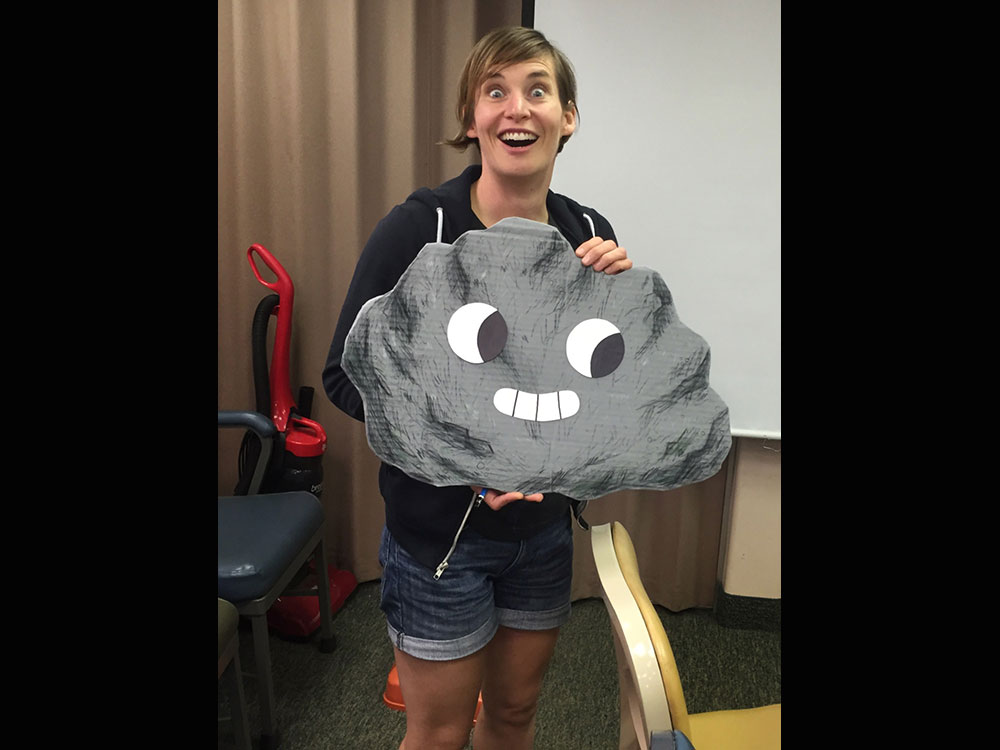
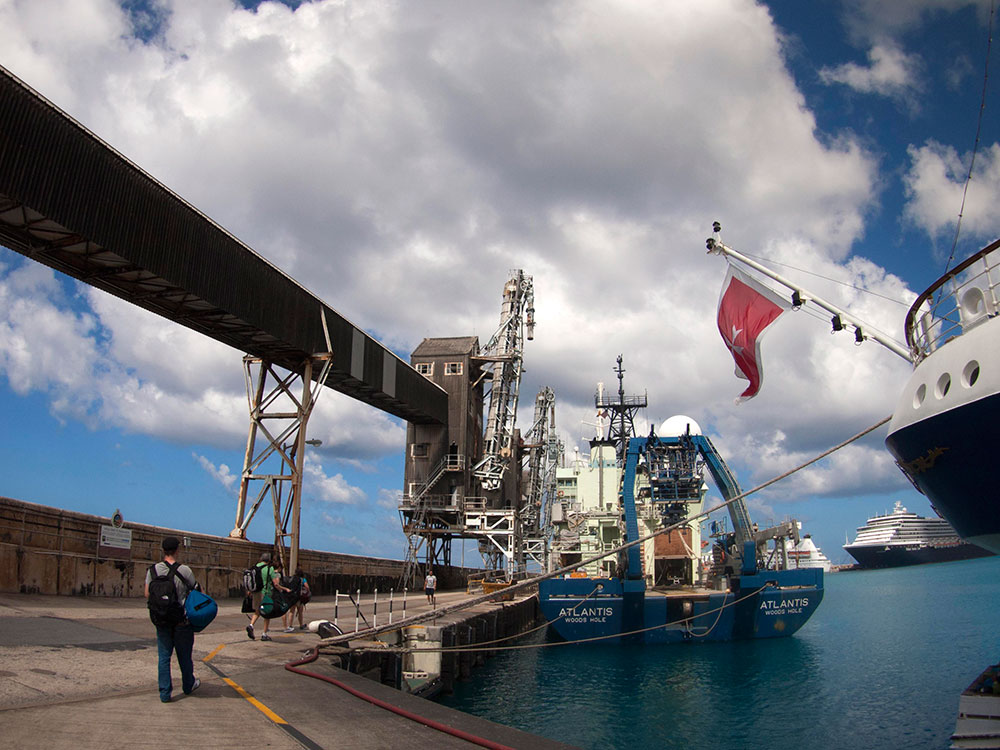
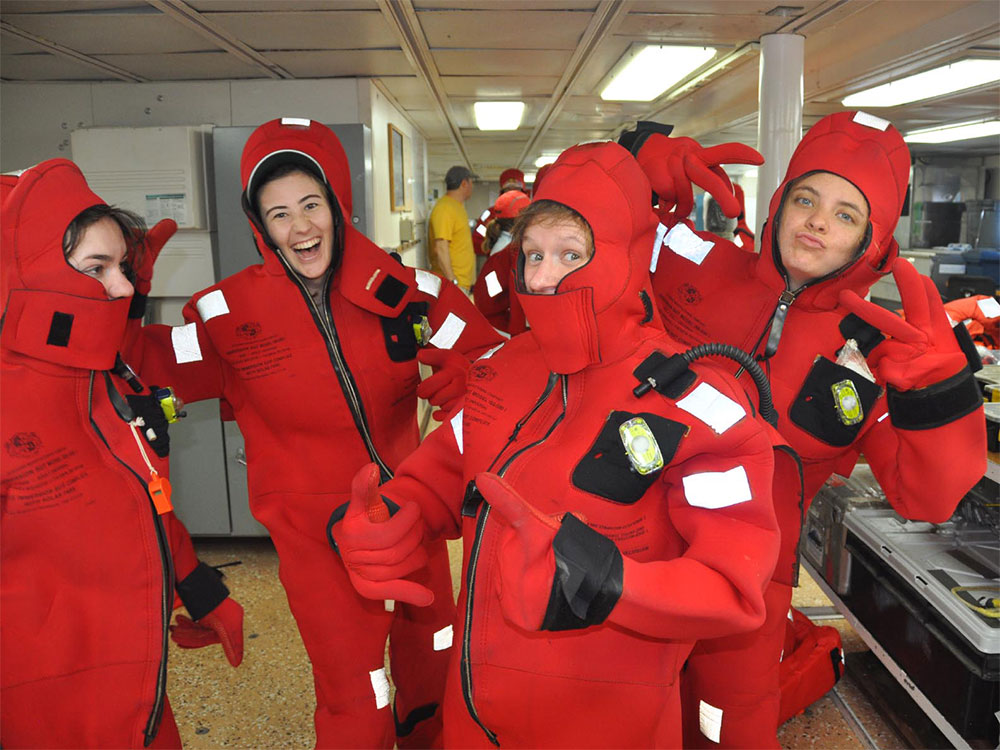
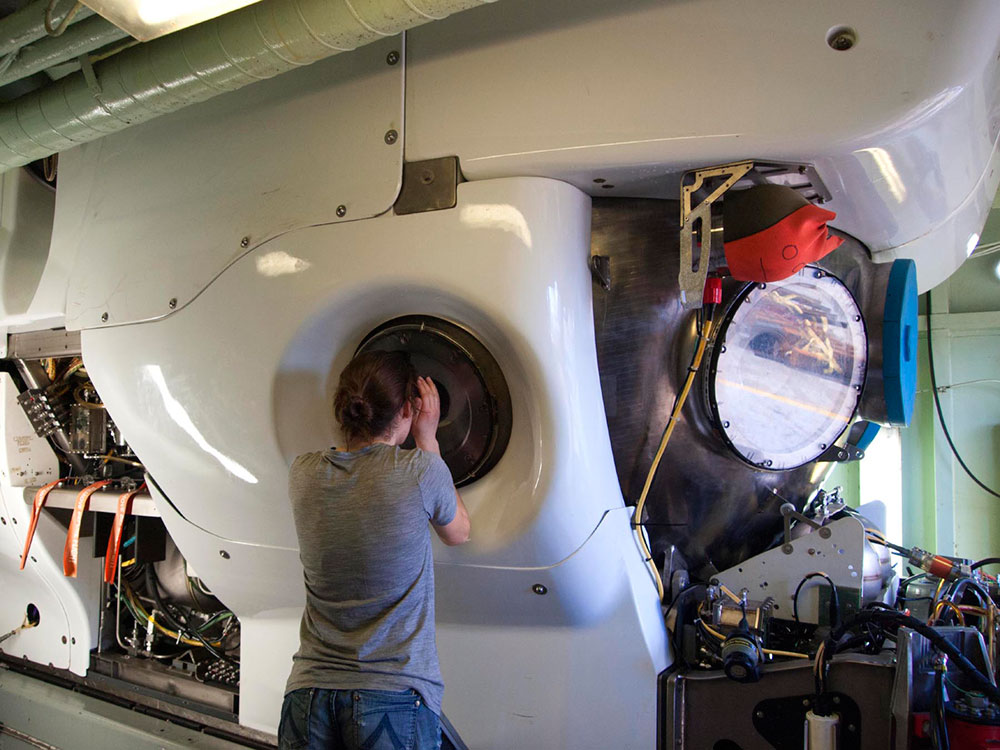
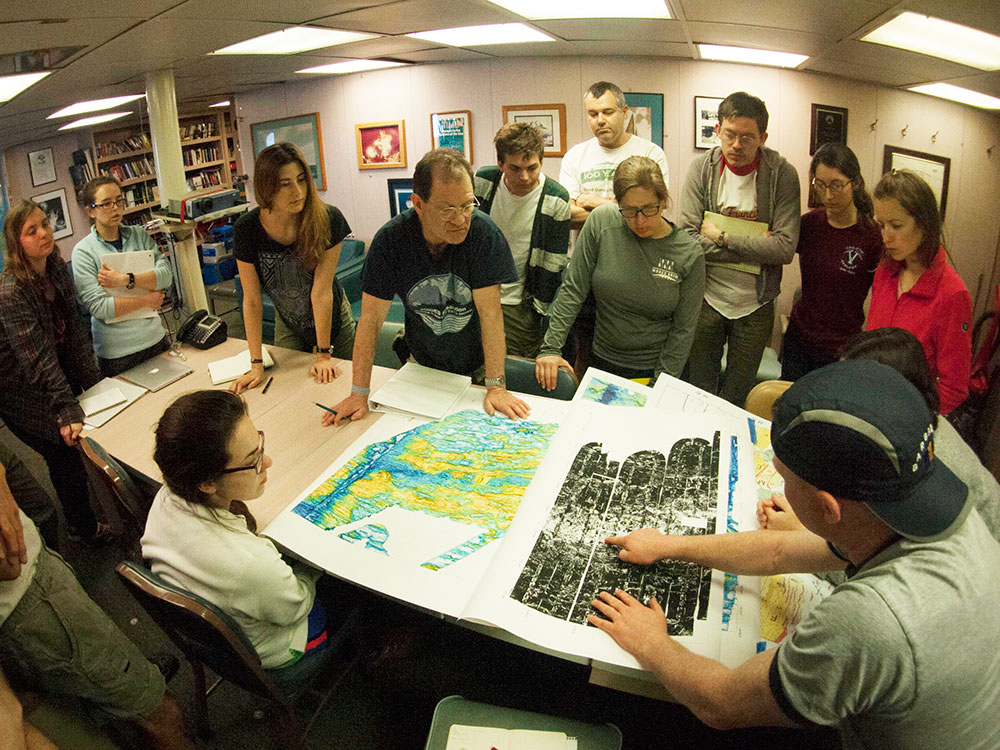
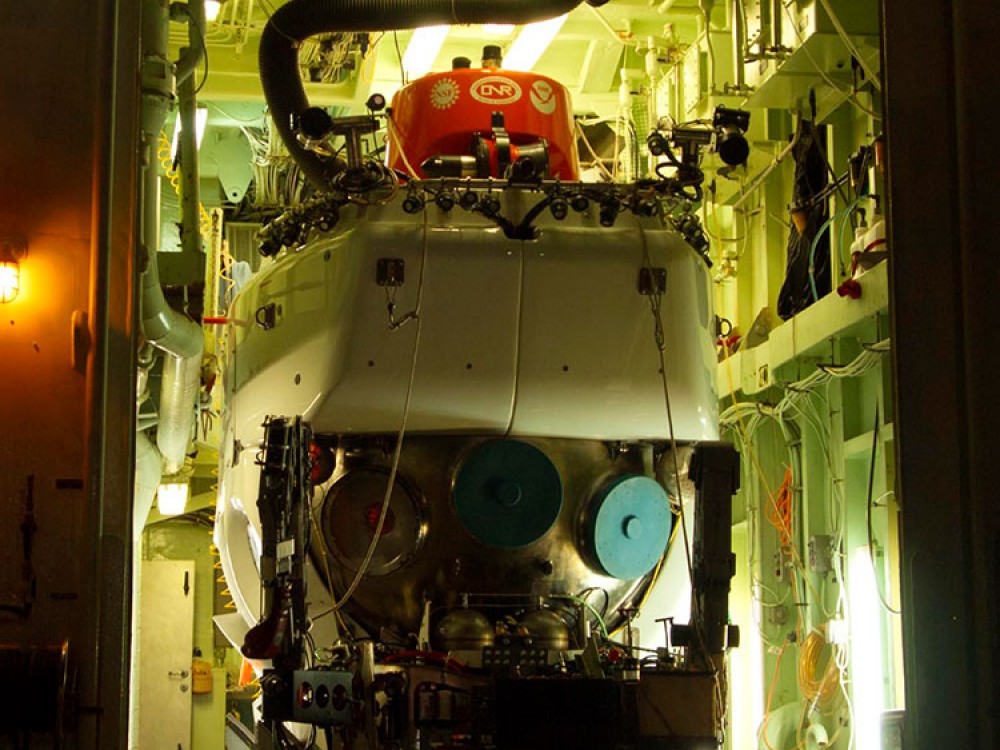
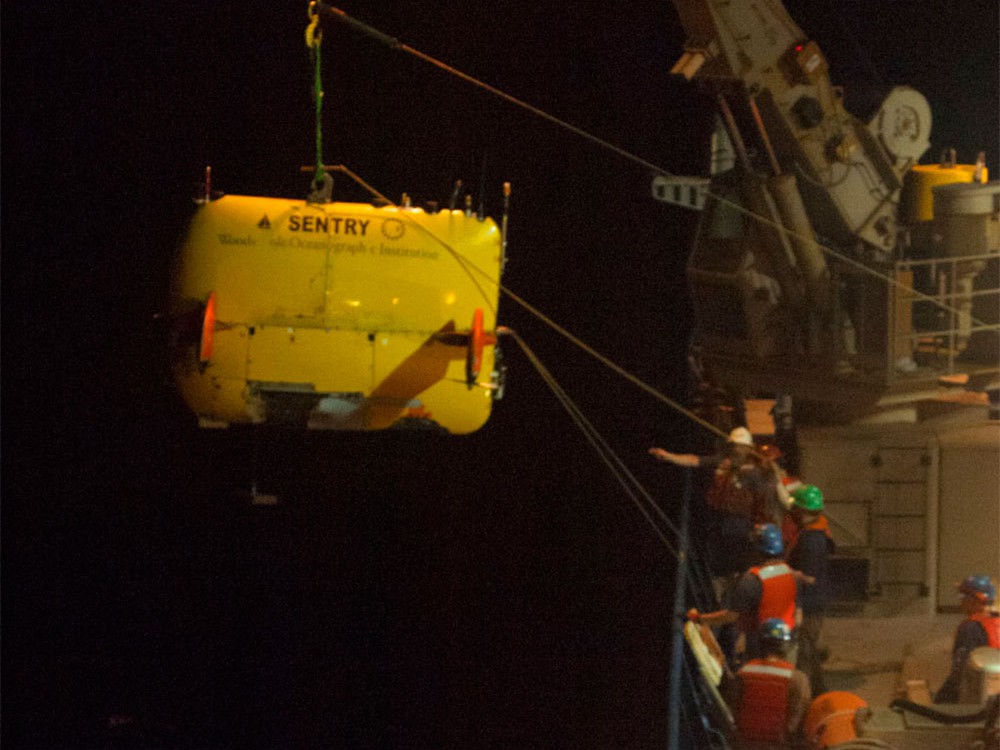
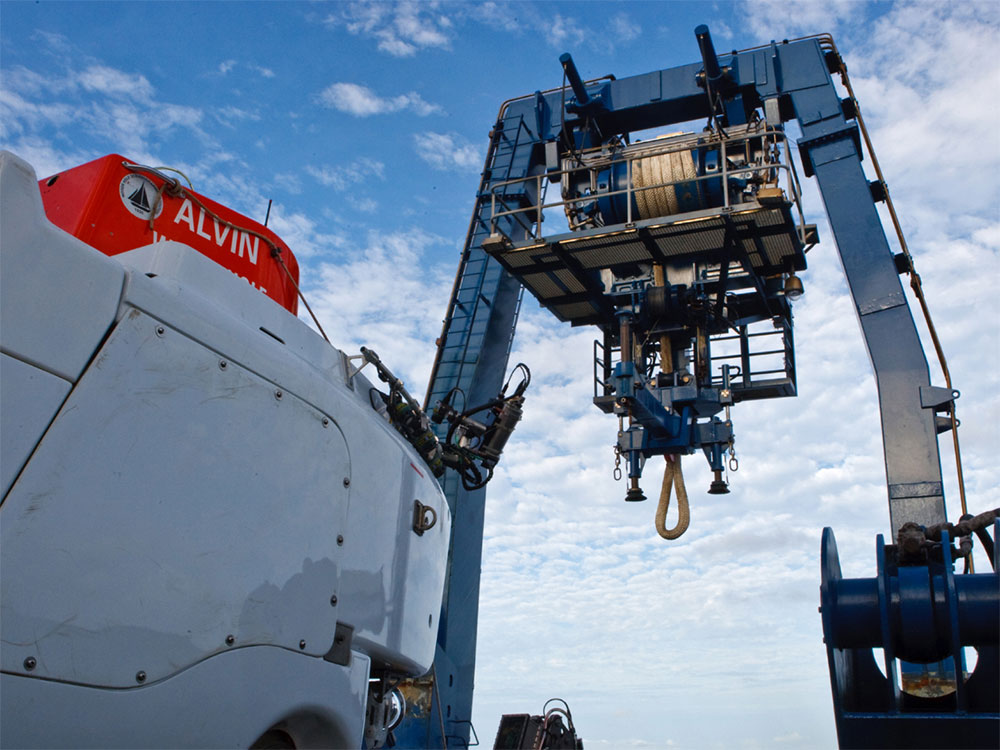
Meet Igneous Popping Rock (aka Iggy Pop Rock), our Popping Rocks 2016 mascot! That's me in the background. (Photo by Adam Soule, Woods Hole Oceanographic Institution)
Arrival at the dock in Barbados (and my first time seeing R/V Atlantis in real life). (Photo by Maris Wicks)
Our introduction to living aboard R/V Atlantis included safety; this was taken during a ship evacuation drill, where we learned to put on our immersion (or survival) suits. (Photo by Eric Mittelstaedt, Idaho State University)
Lydia takes a peek inside Alvin's personnel sphere--don’t worry, she’s not touching the acrylic viewport! (Photo by Maris Wicks)
Planning for the first Alvin dive of the cruise in library of R/V Atlantis included a look at both multibeam bathymetry and side-scan sonar maps. (Photo by Maris Wicks)
Alvin tucks in for the night, ready for its first dive in the morning. (Photo by Maris Wicks)
Sentry works the night shift during this cruise, mapping the seafloor while most of us sleep. This information is used to help plan Alvin dives. Here’s Sentry on its first deployment of the cruise, an engineering dive to make sure all the instruments where working correctly. (Photo by Maris Wicks)
Alvin gets a last bit of sunlight before descending 3800 meters beneath the ocean surface. (Photo by Lance Wills, Woods Hole Oceanographic Institution)
Here’s a look back at our arrival on the ship and our first week of science.



